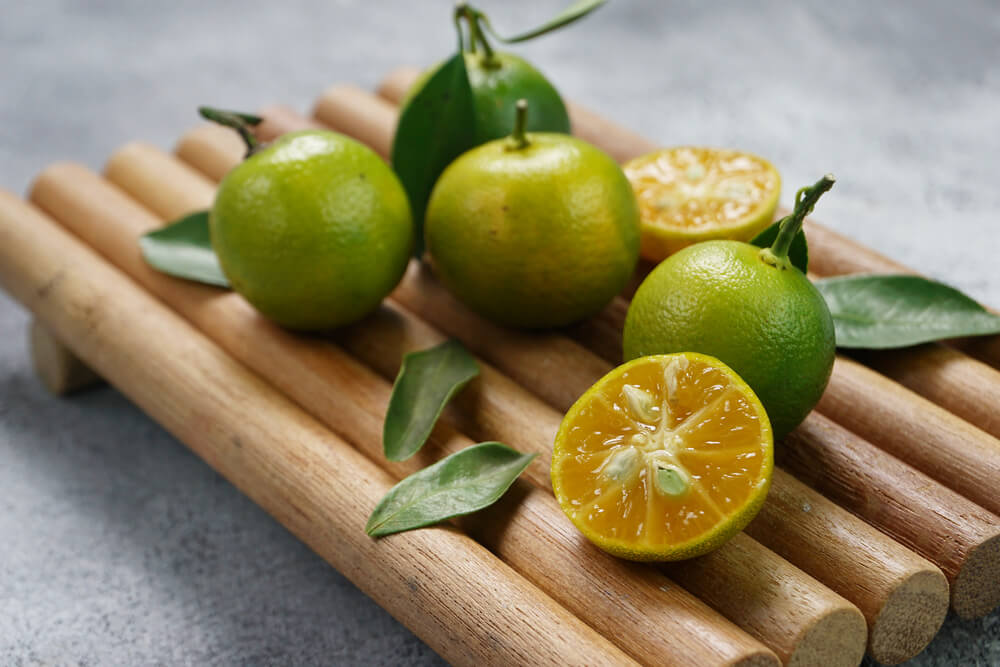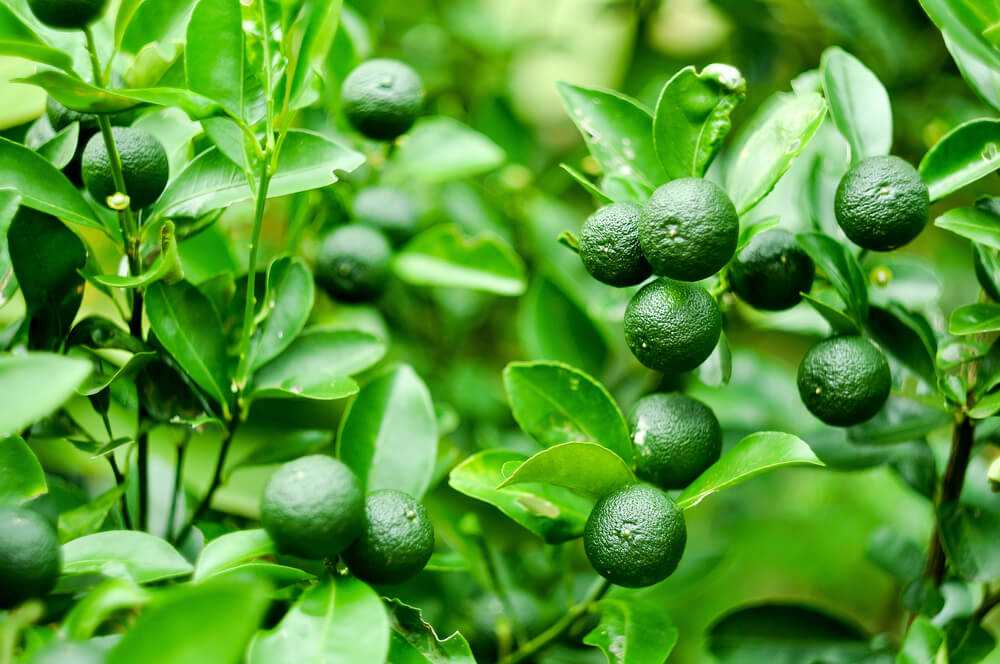Calamansi: The Amazing Filipino Fruit!

Calamansi (kalamansi) is a native citrus fruit in the Philippines and other Southeast Asian countries. It is scientifically known as Citrofortunella microcarpa or Citrus × microcarpa. The fruit is a hybrid, primarily a cross between a kumquat and a mandarin orange.
Philippine limes or calamansi thrive more in warm climates. That is why many have grown and cultivated them in warm climates in Southeast Asia just like the Philippines. A pinch of calamansi juice is the Filipino version of an immune system booster and organic vitamin C. The Philippine lime is not only used for medicinal purposes but they're also a staple of Asian cuisine.
Let's delve more into this amazing tropical plant!
What is Calamansi?
-
Appearance: Calamansi fruits are small, typically about 20-25 mm in diameter. They resemble a miniature, round lime or tangerine. They have a thin, green skin that turns yellow-orange as they ripen.
-
Taste: The fruit is known for its sour taste, which is similar to a combination of lime and lemon. When ripe, it also has a hint of sweetness.
-
Usage: Calamansi is widely used in Filipino cuisine in a variety of ways. It's often used as a seasoning, adding a citrusy flavor to dishes. It's also popularly squeezed into hot or cold beverages for its refreshing taste.
-
Calamansi Juice: The juice is a key ingredient in many Filipino recipes, used in marinades, dips, sauces, and beverages. It's valued both for its flavor and its vitamin C content.
-
Cultivation: The calamansi tree is small and bushy, making it suitable for a backyard garden. It's a tropical plant but can also be grown as a houseplant in non-tropical climates.
-
Health Benefits: Calamansi is rich in vitamin C and antioxidants. It's used in traditional remedies for a range of ailments, from coughs and colds to skin problems.
Calamansi or the Philippine golden lime is versatile and flavorful. Its unique, strong, and zesty flavor brings in various health benefits and culinary uses. Many Southeast Asian kitchens use them to add that unique flavor.
The Calamansi Tree: A Tropical Gem
Calamansi trees are a common sight in the Philippines. These trees are relatively small and bear tiny, green-to-golden citrus fruits. Growing calamansi trees is a rewarding experience for many gardeners and fruit enthusiasts.

Nutritional Benefits of Calamansi
Calamansi juice is not only refreshing but also packed with vitamin C and antioxidants. These nutrients are essential for boosting immunity and promoting skin health.

The Unique Calamansi Taste
A little squeeze of fresh calamansi has a sour and slightly sweet taste, making it a unique member of the citrus fruits family. Its distinct flavor is more intense than that of its relatives, the mandarin orange and other citrus fruit.
Calamansi in Filipino Cuisine
Calamansi is a key ingredient in various Filipino dishes. Its tangy and slightly sour flavor makes it a perfect element to the famous sinigang adds aroma to your marinade mix, and adds fire to that Philippine soy sauce.
You'll see that calamansi is evident in any dipping soy sauce and marinade. Whether you're looking to add richness of flavor to any grilled dish or simply a marinade mix that stands out - calamansi is your staple! Its refreshing zest is integral to the distinct and vibrant taste profiles in Filipino cooking.

Calamansi Juice: A Versatile Beverage
Calamansi juice, a popular drink in the Philippines, is enjoyed both hot and cold. This beverage is not only delicious but also offers numerous health benefits. Some people add a bit of honey or sugar to your calamansi juice to balance out its strong flavor.

Drinking pure calamansi juice early in the morning is said to help you clean your gut and suppress your appetite. While others are successful in incorporating this wonderful sour orange drink, it is still best to consult a medical expert before trying this out. In the absence of lemons, calamansi is a perfect replacement ingredient to make a lemonade.
Calamansi as a Dipping Sauce
Mixed with soy sauce or other condiments, calamansi juice makes an excellent dipping sauce. It's commonly used with grilled meats and seafood, adding a tangy twist to these dishes.
If you are familiar with the Philippine street food - barbeque, you'll notice that people pair it up with a dipping soy sauce with a pinch of calamansi extract. The calamansi extract not only produces a beautiful aroma, but it enhances the flavor of every food you dip in it. It creates a flavorful experience in your palate, wanting you to want more or eat more.

Fresh Calamansi vs. Other Citrus Fruits
While calamansi is often compared to other citrus fruits, its unique taste and size set it apart. Fresh calamansi can be used in recipes calling for lemon, offering a distinct flavor profile.
Calamansi in Desserts
The versatility of calamansi extends to desserts. Its juice is used in cakes, candies, and other sweet treats, providing a refreshing citrus note.
When making desserts like lemon cake, tart, and sweet sticky rice, most Filipinos add calamansi peel to add extra flavor to these sweet treats. These sour orange or Philippine limes are a flavor enhancer staple in any Asian kitchen.

Calamansi in the Global Market
The popularity of calamansi is rising globally. Fresh fruits, juices, and other calamansi-based products are increasingly available in international markets.
With the rise of international demand for these limes, many Filipino farmers have planted these limes to export to other countries. This is easy to grow and cultivate and considers the demand to be always in peak season.
Sanzo Sparkling Water Calamansi: A Refreshing Twist
Bokksu Market offers an exciting product for calamansi enthusiasts: Sanzo Sparkling Water Calamansi. This beverage combines the unique flavor of calamansi with the refreshing effervescence of sparkling water, creating a delightful and thirst-quenching drink.
Calamansi: More Than Just a Fruit
Calamansi is more than a citrus fruit; it's a cultural icon in the Philippines. It represents the vibrant and diverse culinary traditions of the country.
Exploring Other Exotic Fruits at Bokksu Market
Bokksu Market is not just about calamansi. It's a treasure trove of exotic fruits and unique flavors. From the sweet and tangy yuzu to the rich and creamy durian, the market offers a variety of fruits that cater to all taste preferences.
The World of Exotic Citrus Fruits
In addition to calamansi, Bokksu Market features a range of exotic citrus fruits. Each fruit offers its own unique taste and health benefits, making them perfect for adventurous palates.
The Sweetness of Lychee
Lychee, with its sweet and floral taste, is a popular choice among exotic fruit lovers. Bokksu Market offers lychee flavors snacks and drinks, perfect for those warm summer days. Make sure to check our lychee selection such as Lychee Ramune or Lychee Gummy.
The Unique Flavor of Yuzu
Yuzu, a citrus fruit with a complex and aromatic flavor, is another exotic offering at Bokksu Market. It's often used in Japanese cuisine to add a zesty note to dishes. We got you covered with our wide selection of Yuzu products such as Kuze Fuku Yuzu Fruit Spread or Calbee Shrimp Chips: Yuzu Pepper.
Conclusion: The Enduring Appeal of Calamansi and Exotic Fruits
Calamansi, the Philippine lemon, along with other exotic fruits available at Bokksu Market, highlights the rich culinary diversity of the world. Their unique tastes and versatility make them beloved ingredients in various cuisines and a testament to the global appeal of exotic flavors.
Whenever you're planning to try out Philippine food, don't forget to grab these little green tangy limes. Be it a dipping soy sauce, a marinade mix, or even a chocolate tart, adding this fruit is a sure way to fire up flavors!
Author Bio














